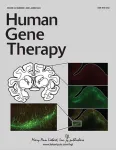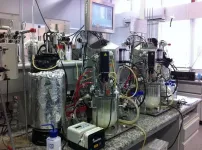(Press-News.org) TAMPA, Fla. – Immunotherapies have greatly improved the outcomes of many patients with melanoma. But there is still a need for new approaches for the subset of patients who do not respond well to this type of therapy. Moffitt Cancer Center researchers are looking at new targets to help inhibit tumor development and promote antitumor immunity, one being the STING signaling pathway. In a new article published in Nature Communications, a team of Moffitt and University of Miami Miller School of Medicine investigators demonstrate that targeting the STING pathway with a combination strategy results in improved antitumor activity.
The STING pathway is a key regulator of immune responses to viruses and bacteria and contributes to antitumor immunity. Inhibition of STING signaling is observed in several cancer cell lines, and expression of STING protein decreases as some cancer types progress, such as melanoma. These observations suggest that agonist drugs, or drugs that activate STING signaling within the tumor environment, may have antitumor effects.
“This hypothesis has been confirmed in many pre-clinical laboratory studies. However, STING agonists have had disappointing results in human clinical trials, suggesting that an unknown mechanism is contributing to these poor responses,” said lead study author Rana Falahat, Ph.D., a research scientist in the Immuno-Oncology Program at Moffitt. “This is what prompted our study.”
The Moffitt and University of Miami team wanted to improve their understanding of STING signaling and investigate how to improve the antitumor activity of STING agonists. They previously demonstrated that the DNA region that controls STING protein expression is modified by a process called methylation, during which chemical methyl groups are added to the DNA. This modification reduces the protein level of STING, resulting in less STING protein to inhibit tumor development. The researchers hypothesized that drugs that block methylation and increase STING expression levels in tumor cells may work in conjunction with STING agonists to kill cancer cells.
The researchers performed experiments in mouse models of melanoma with defective STING signaling either in the tumor cells or the surrounding immune cells. Similar to the human STING gene, they discovered that the mouse STING gene was also regulated by methylation. When the researchers treated cells with drugs that blocked methylation, STING expression and signaling increased, leading to the production of chemical messengers that enhanced antitumor immunity. They also demonstrated that treatment of mice with methylation inhibitors and STING agonists resulted in improved antitumor activity that was dependent on the presence and activity of immune cells called CD8 T cells.
These observations reveal that reactivating STING signaling in the tumor cells with methylation inhibitors can shape the therapeutic response to STING agonists. The researchers hope these preclinical findings will lead to better treatments for cancer patients in the clinic.
“Although additional work will be necessary to further identify optimal dosing levels and therapeutic schedules of each component, insights from our study provide a framework to design proper clinical treatment modalities with appropriate patient selection in melanoma and perhaps other solid tumors,” said James J. Mulé, IPh.D., senior author, associate center director for Translational Science and the Michael McGillicuddy Endowed Chair for Melanoma Research and Treatment at Moffitt.
This study was supported by the National Cancer Institute (P30 CA076292 and P50 CA168536), the CJG Fund, the Chris Sullivan Fund, the V Foundation, the Dr. Miriam and Sheldon G. Adelson Medical Research Foundation and a Melanoma Research Foundation Career Development Award.
About Moffitt Cancer Center
Moffitt is dedicated to one lifesaving mission: to contribute to the prevention and cure of cancer. The Tampa-based facility is one of only 53 National Cancer Institute-designated Comprehensive Cancer Centers, a distinction that recognizes Moffitt’s scientific excellence, multidisciplinary research, and robust training and education. Moffitt’s expert nursing staff is recognized by the American Nurses Credentialing Center with Magnet® status, its highest distinction. With more than 7,800 team members, Moffitt has an economic impact in the state of $2.4 billion. For more information, call 1-888-MOFFITT (1-888-663-3488), visit MOFFITT.org, and follow the momentum on Facebook, Twitter, Instagram and YouTube.
###
END
In addition to an antigen, many vaccines also contain substances, called adjuvants, which stimulate the immune system. By using computer-aided molecular design and machine learning, a Chinese research team has now developed two novel broad-spectrum adjuvants that can significantly amplify the immune response to vaccines. As reported in the journal Angewandte Chemie, they were able to enhance the effectiveness of immunization against certain forms of cancer in animal models.
Adjuvants amplify and prolong the effect of vaccine immunizations. Aluminum salts have been successfully used ...
ITHACA, N.Y. – An international team of astronomers has found the atmospheric compositions of giant planets out in the galaxy do not fit our own solar system trend.
Using NASA’s James Webb Space Telescope (JWST), the researchers discovered that the atmosphere of exoplanet HD149026b, a ‘hot Jupiter’ orbiting a star comparable to our sun, is super-abundant in the heavier elements carbon and oxygen – far above what scientists would expect for a planet of its mass.
These findings, published in “High atmospheric metal enrichment for a Saturn-mass ...
When studying the brain, researchers are just beginning to use a method known as voltage imaging to track neural activity in the living animal. While this approach is a promising way to better understand neuron firing, behavior, and cognition, there are limitations and risk factors. The practice requires putting a lot of light into the brain (which can lead to overheating) and only has the capacity to image ten neurons at a time.
New research from Jerry Chen, a Boston University College of Arts & Sciences assistant professor of biology, and collaborators aims to address these challenges. Published today in Nature Methods, ...
Researchers at Rochester Institute of Technology are investigating the combined physical effects of heat, chemical reactions, and seismic activity on concrete lining structures used to dispose of nuclear waste. Results from the work could improve nuclear waste infrastructure designs, better long-term safety management, and refine strategies to meet climate change targets.
Lu Sun, a professor in RIT’s College of Engineering Technology (CET), received a grant of nearly $500,000 from the Nuclear Regulatory Commission for “High temperature and seismic response of concrete lining structures and clay in nuclear waste disposal.” ...
An international team of researchers has used NASA’s James Webb Space Telescope to measure the temperature of the rocky exoplanet TRAPPIST-1 b. The measurement is based on the planet’s thermal emission: heat energy given off in the form of infrared light detected by Webb’s Mid-Infrared Instrument (MIRI). The result indicates that the planet’s dayside has a temperature of about 500 kelvins (roughly 450 degrees Fahrenheit) and suggests that it has no significant atmosphere.
This is the first detection of any form of light emitted by an exoplanet as small and as cool as the rocky planets in our own solar system. The result ...
Providing an overview of the submissions process and examples of U.S. Food and Drug Administration (FDA) applications for Orphan Drug Designation (ODD) and Rare Pediatric Disease Designation (RPDD), a new article can help developers of gene therapies for rare genetic diseases. The article is published in the peer-reviewed journal Human Gene Therapy. Click here to read the article now.
Anne Pariser and Elizabeth Ottinger, from the National Center for Advances in Translational Sciences (NCATS), National Institutes of Health, and coauthors, describe the ODD and RPDD programs, which provide financial incentives for the development of ...
A Brazilian study paves the way to increased efficiency of second-generation (2G) ethanol production based on the discovery of novel targets for metabolic engineering in a more robust strain of industrial yeast. An article on the study is published in the journal Scientific Reports.
The databases compiled by the authors are at the disposal of the scientific community in the repository of the State University of Campinas (UNICAMP), which is a member of the Dataverse Project, an international collaborative initiative supported by FAPESP.
First-generation (1G) ethanol is produced from sources rich in carbohydrates ...
UC Davis Health and Propeller Health have announced a new collaboration that will offer personalized treatment for high-risk patients with asthma and chronic obstructive pulmonary disease (COPD) aiming to improve their health outcomes.
As part of the collaboration, UC Davis Health will provide the Propeller program – including sensors, mobile app, web portal, and personalized support – to eligible patients, with eventual expansion to patients in other UC locations and UC affiliates. The sensors attach to a patient’s inhaler to capture unique signals that record events, such as ...
Minipuberty is a stage of reproductive development during infancy in both sexes when reproductive hormones change and reproductive organs develop. The importance of minipuberty is not well understood but could represent an opportunity for the early identification of future reproductive conditions and enable prompt treatment. Anti-Müllerian hormone (AMH) is one of the hormones that changes during minipuberty, and it plays a key role in the development of reproductive organs in boys. However, the role of AMH in infant girls is less clear.
In ...
ITHACA, N.Y. – Female giant African pouched rats, used for sniffing out landmines and detecting tuberculosis, can undergo astounding reproductive organ transformations, according to a new study.
The paper, “Extreme plasticity of reproductive state in a female rodent,” which published March 27 in Current Biology, explores how traits once considered “fixed” in adult animals may become variable under specific pressures.
Though these rodents could have important military, biodetection and humanitarian uses, breeding them at high rates has been a challenge. ...



